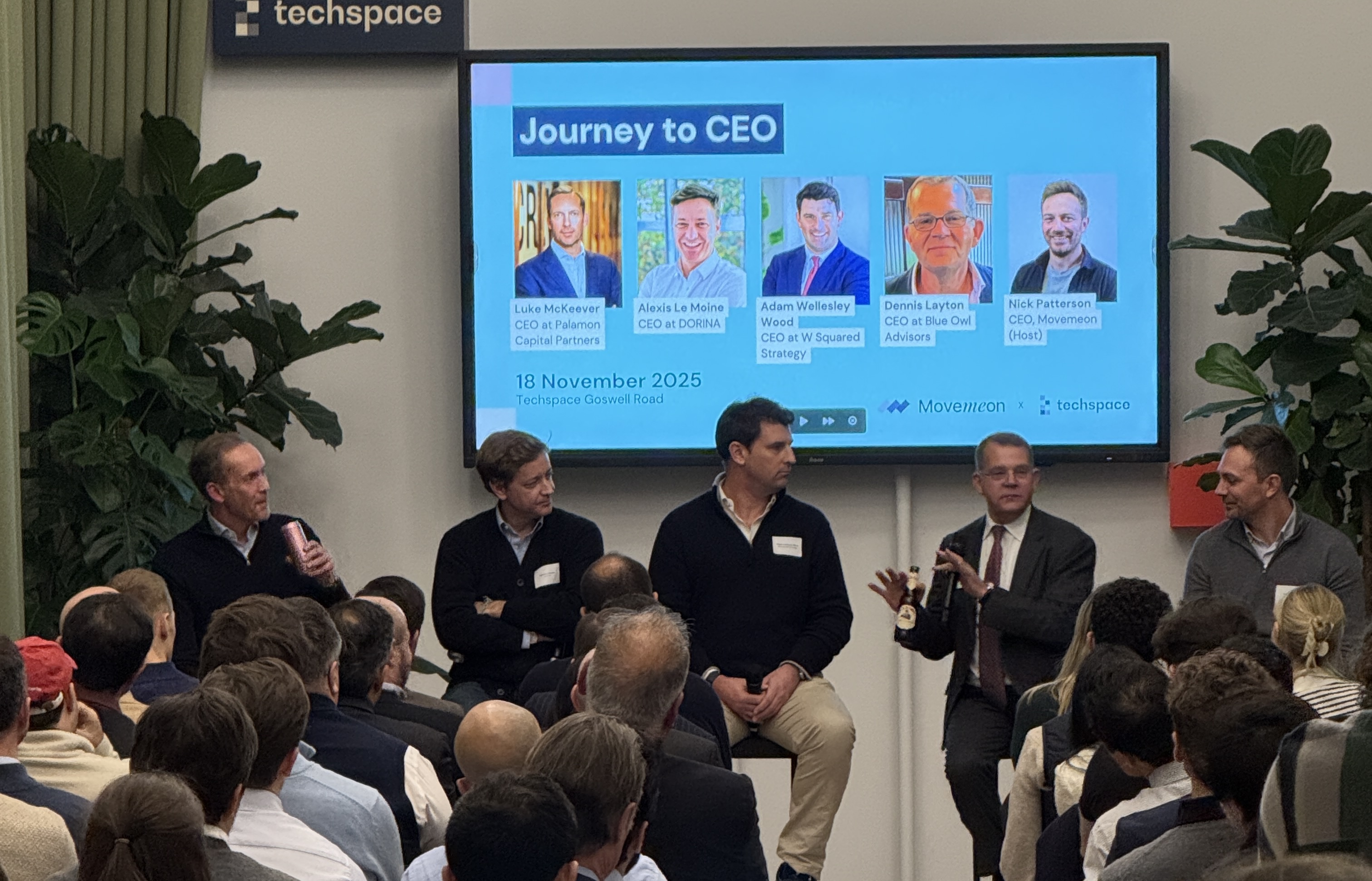PART 1 - How to build a high-performing team from scratch

Table des matières
Balises
Abonnez-vous à notre newsletter
It’s not every day that leaders have an opportunity to build a team from scratch. I’ve been fortunate to do just this over the past two years and it has been one of the most rewarding experiences of my career. At Rich’s (Movemeon co-founder) invitation, I share below the 3 principles that I’ve found to be essential in building a high-performing team, each of which I’ll expand on in a separate post with examples from my experience:
1. Attract and hire the right people, then set them up for success.
2. Cultivate an inspiring culture that maximizes individual and team performance.
3. Demonstrate servant leadership daily.
Principle #1. Attract and hire the right people, then set them up for success.
Attract top-tier talent with an authentic and compelling narrative.
More than ever, employees are looking for a compelling “why” to take on a new role in a new organization. The story of where the organization has been, where we are now, where we’re going, and how they will contribute and grow should be clear every step of the way.
I learned early in my career when I worked in innovation consulting that documents shouldn’t be boring, especially job descriptions. When I crafted the JDs for the open roles on my team with HR and Talent Acquisition, we intentionally included “conversational” language that gave candidates a tangible sense of the team, the role, the type of person we were looking for, and our excitement and passion.
Candidates must also hear a consistent, authentic narrative from each person that they interact with. At the beginning of the recruiting process, my recruiter and I discussed the “why”, the “how”, and the “what” for each role so that she could be an excellent partner as she screened and communicated with candidates.
Identify the right person for the job with a robust interview process.
Once there’s a slate of great candidates, it’s time for the interview and selection process.
Drawing on my experience as a management consultant, I have always utilized case interviews when hiring. The case consisted of a real business challenge the role would tackle and a set of questions for the candidates to address. Candidates then gave a presentation to a cross-functional interview panel. Finally, interviewers scored candidates with a clear rubric for their assessments.
The case interview approach has multiple benefits:
- Allows candidates to demonstrate how they truly think, work, and communicate. One candidate who joined my team showed extraordinary initiative by reaching out to 20+ employees on Linkedin and including the results of his interviews with them in his presentation. Another team member was hired in large part because he impressed us with the depth and thoughtfulness of his presentation as well as how he responded to questions. In my experience, a case interview allows the hiring team to learn far more about candidates than a series of 30-45min “behavioral” interviews alone.
- Gives candidates a sense of the work they’ll be responsible for. Candidates can determine if the type of challenge being presented during the case interview is something they are excited to work on. Additionally, case interviews can eliminate those who are not seriously considering the role. For example, one candidate had reservations about leaving his current role and did not have time for the case interview. He withdrew his candidacy, and I was grateful for his honesty.
- Enables robust discussion among the interview panel. It’s important for the stakeholders and collaborators on the interview panel to have a front-row seat to what each candidate brings to the table. During the debrief conversations for my open roles, my interview panel and I could dialogue with specificity on the strengths and weaknesses we observed.
Are you looking for a new opportunity? View all jobs on Movemeon here!
Create a strategic onboarding experience with clear expectations.
After the top candidate accepts the offer (hooray!), setting them up for success is key.
I developed 30-60-90 day onboarding plans for my direct reports and asked them to do the same for anyone they hired. On a new team member’s first day, we discussed this onboarding plan together and I invited them to share feedback, including any elements they wanted to add. While this onboarding plan certainly included the standard tactical elements to get them up and running (e.g., technology, mandatory trainings), far more important were the elements specific to their role. For example, my direct reports were all hired into relatively senior and strategic roles. Therefore, I asked them to focus their early days on relationship-building, learning, and assessing the current-state. I also asked them to not jump into the weeds of day- to-day problem solving and firefighting despite pressure from others in the organization.
At the 60-day mark, a key milestone was for my team members to share their observations, analyses, recommendations, and go-forward plan. While we had discussed their top 3 priorities early on (which had been blessed by my manager), these 60-day conversations gave my team members an opportunity to voice valuable fresh perspectives as well as shape their own activities based on business needs and nuances they had independently uncovered.
Summary
In short, building a high-performing team starts with the people we bring onboard. As leaders, it’s our responsibility to articulate a powerful vision that attracts the right types of people, put processes in place to ensure we hire the best talent, and empower and equip our people from the very beginning so they can shine.
Next time, we’ll discuss how to cultivate an inspiring culture that maximizes both individual and team performance. As we all know, culture eats strategy (and anything else) for breakfast.
Author: Li Kehl
Whether you are ready to hire through Movemeon or just looking for more information about hiring, one of our team of friendly specialists will get in touch within 24hrs.
Are you a candidate? Join Movemeon for free.
[hubspot portal="25392842" id="519fa7a4-9f5d-4fc1-9cce-40d189b9a881" type="form"]
Where Talent Meets Opportunity
Our exclusive network use us to find job that fit their skills, and thousands of Employers trust us to hire exceptional talent. Choose the path that matches your goals - start exploring or start hiring.
Nos derniers articles
Nous publions régulièrement des articles actualisés pour vous tenir au courant de l'actualité du marché et de notre travail.
.png)
A record quarter for Private Equity deals sees a sharp hardening in the hiring market
Talent supply tightens as PE demand surges: Inside Q4’s hardest hiring market in two years, where Private Equity accelerates, scale-ups hold steady, and Large Enterprises struggle to attract strategy and transformation talent.

What we can all learn from Private Equity about talent - McKinsey, HBR and our analysis
Private Equity has become one of the most influential forces in business, outperforming public companies through disciplined value creation and exceptional talent strategy. This article explains how PE achieves its results and why demand for ex-consulting talent is rising across the industry.
Joignez-vous à notre offre exclusive communauté mondiale
Recevez des données et des informations exclusives sur les salaires, l'analyse comparative, et des entretiens avec l'industrie pour bâtir une carrière qui vous convient.
Créez un compte dès aujourd'hui et commencez à rechercher des rôles dans moins de cinq minutes.





